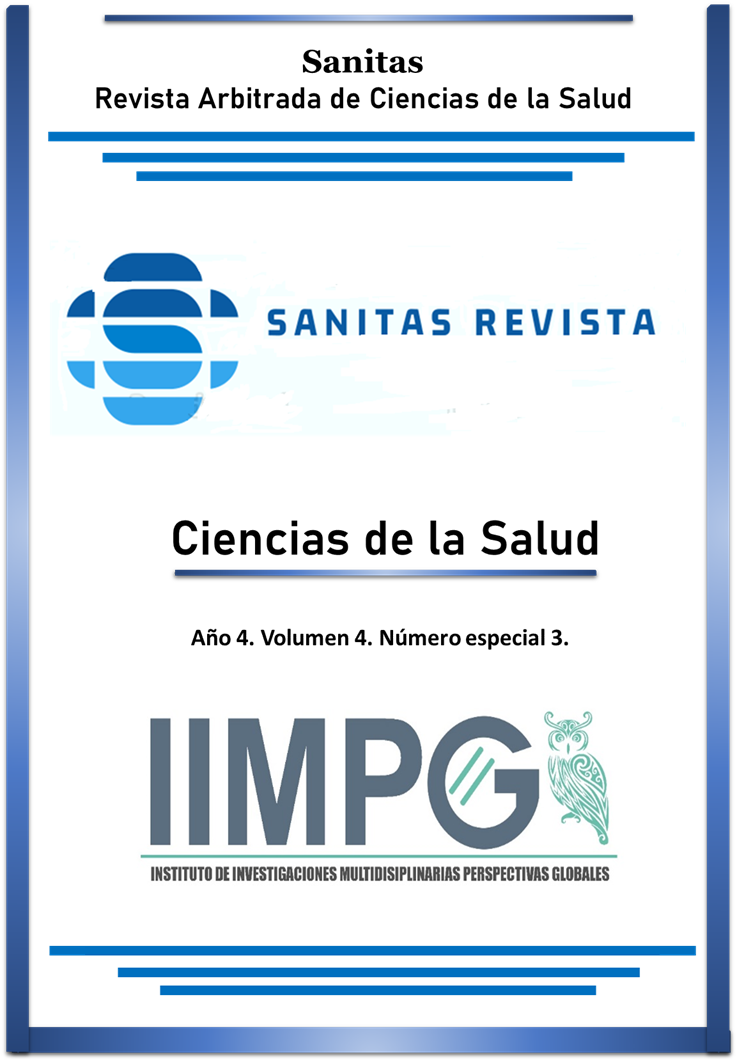Complicaciones por extravasación de hipoclorito de sodio en tejidos periapicales durante el tratamiento endodóntico [Complications of sodium hypochlorite extravasation into periapical tissues during endodontic treatment]
DOI:
https://doi.org/10.62574/nzwc3110Palabras clave:
hipoclorito de sodio, irrigantes del conducto radicular, endodonciaResumen
Objetivo: analizar el uso del hipoclorito de sodio en endodoncia, sus riesgos asociados y estrategias para prevenir complicaciones por extravasación. Método: revisión sistemática siguiendo lineamientos PRISMA. Se analizaron 20 artículos publicados entre 2020-2025. Resultados: El hipoclorito de sodio (NaOCl) es el irrigante endodóntico más utilizado por sus propiedades antimicrobianas y capacidad de disolver tejido necrótico. Sin embargo, su extravasación hacia tejidos periapicales puede causar complicaciones severas: inflamación, necrosis tisular, hematomas faciales, parestesia y compromiso de vía aérea. Concentraciones mayores aumentan eficacia antimicrobiana pero incrementan citotoxicidad. El NaOCl al 2.5% mostró menor toxicidad que concentraciones superiores. La evaluación preoperatoria con tomografía computarizada de haz cónico permite identificar defectos anatómicos que aumentan riesgo de extrusión. Técnicas como irrigación a presión negativa, activación ultrasónica, uso de agujas calibre 30G y control del tiempo de aplicación (mínimo 30 segundos para 5mL) reducen significativamente riesgo de accidentes.
Descargas
Referencias
Vivekananda Pai AR. Factors influencing the occurrence and progress of sodium hypochlorite accident: A narrative and update review. J Conserv Dent. 2023;26(1):3–11.
Nasiri K, Wrbas KT. Management of sodium hypochlorite accident in root canal treatment. J Dent Sci. 2023 Apr;18(2):945–6.
Briggs EA, Toner R, Kilgariff JK. Evidence-based Standard Operating Procedures for the Prevention and Management of Sodium Hypochlorite Accidents in Dentistry. Prim Dent J. 2023 Mar;12(1):97–109.
Abramson A, Sabag E, Nahlieli O. Surgical approach to a severe case of sodium hypochlorite accident: A case report and review of the literature. Quintessence Int. 2021 Sep 9;52(9):806–10.
Pai ARV. Injection of sodium hypochlorite into soft tissues of the oral cavity: A literature review with clinical preventive recommendations. J Stomatol Oral Maxillofac Surg. 2023 Dec;124(6 Suppl 2):101581.
Gupta A, Singh TK. Unravelling the sodium hypochlorite accident with comprehended treatment protocol: A case report. Med Rep. 2024 Aug 1;6:100077.
Demenech LS, de Freitas JV, Tomazinho FSF, Baratto-Filho F, Gabardo MCL. Postoperative pain after endodontic treatment under irrigation with 8.25% sodium hypochlorite and other solutions: A randomized clinical trial. J Endod. 2021 May 1;47(5):696–704.
Claudino Ribeiro JR, da Silveira Bueno CE, Bruno KF, Dos Reis S, de Martin AS, Fontana CE, et al. Impact of sodium hypochlorite on organic tissue dissolution in the periapical region of immature permanent teeth: An ex vivo study. J Endod. 2022 Apr;48(4):555–60.
Boutsioukis C, Gutierrez Nova P. Syringe irrigation in minimally shaped root canals using 3 endodontic needles: A computational fluid dynamics study. J Endod. 2021 Sep 1;47(9):1487–95.
Peters OA, Ballal NV, Abe S, De‐Deus G, Gündogar M, Camilleri J, et al. Regulatory issues related to the use of sodium hypochlorite solutions in endodontics. Int Endod J. 2025 Mar;58(3):368–78.
Pai ARV. Mechanism and clinical aspects of sodium hypochlorite accidents: A narrative review. Dent Med Probl. 2025;62(1):173–85.
Pai ARV. Clinical research on sodium hypochlorite irrigation and extrusion: The gap and scope. J Dent Sci. 2023 Jul 1;18(3):1417–8.
Antimicrobial efficacy of chlorhexidine and sodium hypochlorite in root canal disinfection: A systematic review and meta-analysis of randomized controlled trials - ClinicalKey [Internet]. [citado 2025 Mar 16]. Disponible en: https://www.clinicalkey.com/#!/content/journal/1-s2.0-S0099239920303083
Jäggi M, Magni E, Eggmann F, ElAyouti A, Connert T, Weiger R. Apical pressure generated using conventional syringe irrigation in immature teeth—An in vitro study. Materials (Basel). 2021 May 15;14(10):2580.
Cai C, Chen X, Li Y, Jiang Q. Advances in the role of sodium hypochlorite irrigant in chemical preparation of root canal treatment. Biomed Res Int. 2023 Jan 13;2023:8858283.
Mukundan D, Jeevanandan G. Cytotoxic effect of two different concentrations of sodium hypochlorite: An in-vitro study. Cureus. 2023;16(8):e66999.
Ortiz-Alves T, Díaz-Sánchez R, Gutiérrez-Pérez JL, González-Martín M, Serrera-Figallo MÁ, Torres-Lagares D. Bone necrosis as a complication of sodium hypochlorite extrusion: A case report. J Clin Exp Dent. 2022 Oct 1;14(10):e885–9.
Tribovane DC, Tortajada Bustelo JC, Cañellas ÁR. Sodium hypochlorite-induced facial hematoma following root canal treatment. Iran Endod J. 2024;19(1):46–9.
Sahai A, Gupta A, Abraham D, Aggarwal V, Singh A, Sharma G, et al. Evaluation of postoperative pain using warm versus room temperature sodium hypochlorite as an irrigant in mandibular molars with irreversible pulpitis: A randomized controlled trial. J Conserv Dent Endod. 2023;26(4):458–65.
Fiorillo L, D’Amico C, Meto A, Mehta V, Lo Giudice G, Cervino G. Sodium hypochlorite accidents in endodontic practice: Clinical evidence and state of the art. J Craniofac Surg. 2024 Oct 1;35(7):e636–45.
Publicado
Número
Sección
Licencia
Derechos de autor 2025 Miryan Margarita Grijalva-Palacios, Cristopher Gabriel Grijalva-Noboa, Yajaira Nikol Pupiales-Puma (Autor/a) c

Esta obra está bajo una licencia internacional Creative Commons Atribución-NoComercial-CompartirIgual 4.0.
CC BY-NC-SA : Esta licencia permite a los reutilizadores distribuir, remezclar, adaptar y construir sobre el material en cualquier medio o formato solo con fines no comerciales, y solo siempre y cuando se dé la atribución al creador. Si remezcla, adapta o construye sobre el material, debe licenciar el material modificado bajo términos idénticos.










